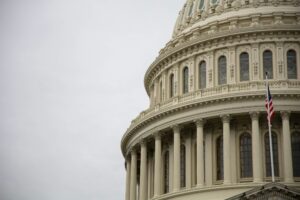Emergency Family and Medical Leave Expansion Act

Division C of H.R. 6201 amends the FMLA to provide up to 12 weeks of family leave to eligible employees of covered employers because of qualifying needs related to childcare coverage “(Public Health Emergency Leave”).
The law covers all private employers with fewer than 500 employees, and all public employers. Part-time employees are included in this count to assess coverage. The Secretary of Labor has the authority to issue regulations to:
- Exempt certain employers with fewer than 50 employees from providing Public Health Emergency Leave under the law. “when the imposition of such requirements would jeopardize the viability of the business as a going concern,” and
- Exclude certain healthcare providers and emergency responders from the definition of “eligible employee,” without prior approval from the U.S. Dept. of Labor.
Eligible Employee Qualification for Coverage
The employee need only have been employed by the employer for at least 30 days to be qualified to receive Public Health Emergency Leave benefits under the law.
Under the law, eligible employees may take leave if the employee is unable to work (or telework) because they must care for a child (under 18 years of age) whose school or care provider is closed or unavailable due to coronavirus emergency as declared by a Federal, State or local authority.
First 10 Days of Leave
The first 10 days of the Emergency FMLA is unpaid. The employee can use his/her Emergency Paid Sick Leave (See: Employer Guidance: Emergency “Families First Coronavirus Response Act” posted March 23, 2020). Employees may elect to use their accrued vacation, personal or sick leave to cover this 10-day window, but employers cannot require the employee to do so.
After the 10 days of unpaid leave, an employer is required to provide paid leave at an amount not less than two-thirds (66.67%) of the employee’s regular rate of pay, up to $200 per day or $10,000 in the aggregate for up to 10 weeks. If an employee’s schedule varies, the paid leave should equal the average number of hours that the employee was scheduled per day over the six-month period prior to the leave.
If the employee did not work in the preceding six-month period, the paid leave rate should equal the “reasonable expectation” of the employee at the time of hire with respect to the average number of hours per day that the employee would be scheduled to work.
Reinstatement Rules
For employers with fewer than 25 employees, the mandate to reinstate employees does not apply when:
- The employee takes a Public Health Emergency Leave; and
- The position held by the employee does not exist due to changes in the employer’s economic or operating conditions that affect employment and were caused by the coronavirus emergency; and
- The employer makes “reasonable efforts” to restore the employee to an equivalent position, and
- If these reasons fail, the employer makes an additional “reasonable effort” to contact the employee if an equivalent position becomes available. The “contact period” is the one-year window beginning on the earlier of (a) the date on which the employee no longer needs to take leave to care for the child or (b) 12 weeks after the employee’s paid leave commences.
Generally, all eligible employees who may take an emergency paid leave are entitled to be restored to the position they held when the leave commenced or to obtain an equivalent position with their employer (unless the above limitations exist).
Pittsburgh Labor and Employment Attorneys
Frank Botta advises companies in a wide variety of labor and employment matters. Please contact Frank at (724) 776-8000 or fbotta@lynchlaw-group.com with your questions and concerns about the impact of COVID-19 on your business.




